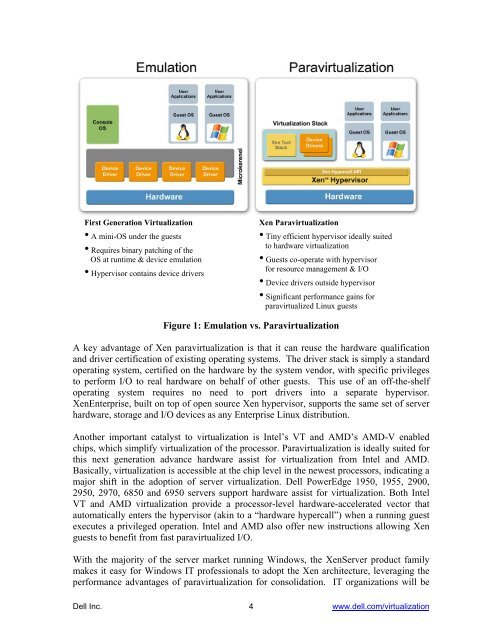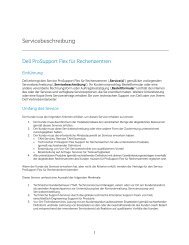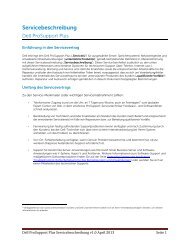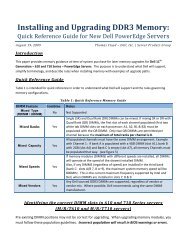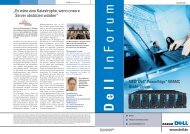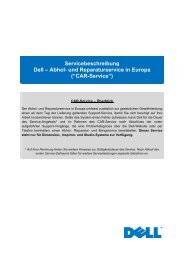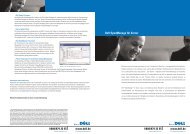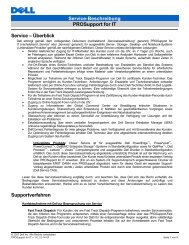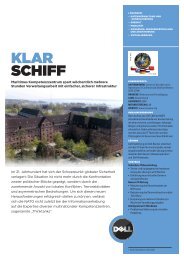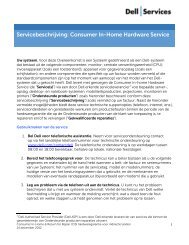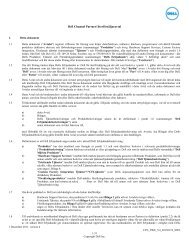Virtualization using XenEnterprise with Dell PowerEdge Servers and ...
Virtualization using XenEnterprise with Dell PowerEdge Servers and ...
Virtualization using XenEnterprise with Dell PowerEdge Servers and ...
Create successful ePaper yourself
Turn your PDF publications into a flip-book with our unique Google optimized e-Paper software.
First Generation <strong>Virtualization</strong><br />
• A mini-OS under the guests<br />
• Requires binary patching of the<br />
OS at runtime & device emulation<br />
• Hypervisor contains device drivers<br />
Xen Paravirtualization<br />
• Tiny efficient hypervisor ideally suited<br />
to hardware virtualization<br />
• Guests co-operate <strong>with</strong> hypervisor<br />
for resource management & I/O<br />
• Device drivers outside hypervisor<br />
• Significant performance gains for<br />
paravirtualized Linux guests<br />
Figure 1: Emulation vs. Paravirtualization<br />
A key advantage of Xen paravirtualization is that it can reuse the hardware qualification<br />
<strong>and</strong> driver certification of existing operating systems. The driver stack is simply a st<strong>and</strong>ard<br />
operating system, certified on the hardware by the system vendor, <strong>with</strong> specific privileges<br />
to perform I/O to real hardware on behalf of other guests. This use of an off-the-shelf<br />
operating system requires no need to port drivers into a separate hypervisor.<br />
<strong>XenEnterprise</strong>, built on top of open source Xen hypervisor, supports the same set of server<br />
hardware, storage <strong>and</strong> I/O devices as any Enterprise Linux distribution.<br />
Another important catalyst to virtualization is Intel’s VT <strong>and</strong> AMD’s AMD-V enabled<br />
chips, which simplify virtualization of the processor. Paravirtualization is ideally suited for<br />
this next generation advance hardware assist for virtualization from Intel <strong>and</strong> AMD.<br />
Basically, virtualization is accessible at the chip level in the newest processors, indicating a<br />
major shift in the adoption of server virtualization. <strong>Dell</strong> <strong>PowerEdge</strong> 1950, 1955, 2900,<br />
2950, 2970, 6850 <strong>and</strong> 6950 servers support hardware assist for virtualization. Both Intel<br />
VT <strong>and</strong> AMD virtualization provide a processor-level hardware-accelerated vector that<br />
automatically enters the hypervisor (akin to a “hardware hypercall”) when a running guest<br />
executes a privileged operation. Intel <strong>and</strong> AMD also offer new instructions allowing Xen<br />
guests to benefit from fast paravirtualized I/O.<br />
With the majority of the server market running Windows, the XenServer product family<br />
makes it easy for Windows IT professionals to adopt the Xen architecture, leveraging the<br />
performance advantages of paravirtualization for consolidation. IT organizations will be<br />
<strong>Dell</strong> Inc. 4 www.dell.com/virtualization


